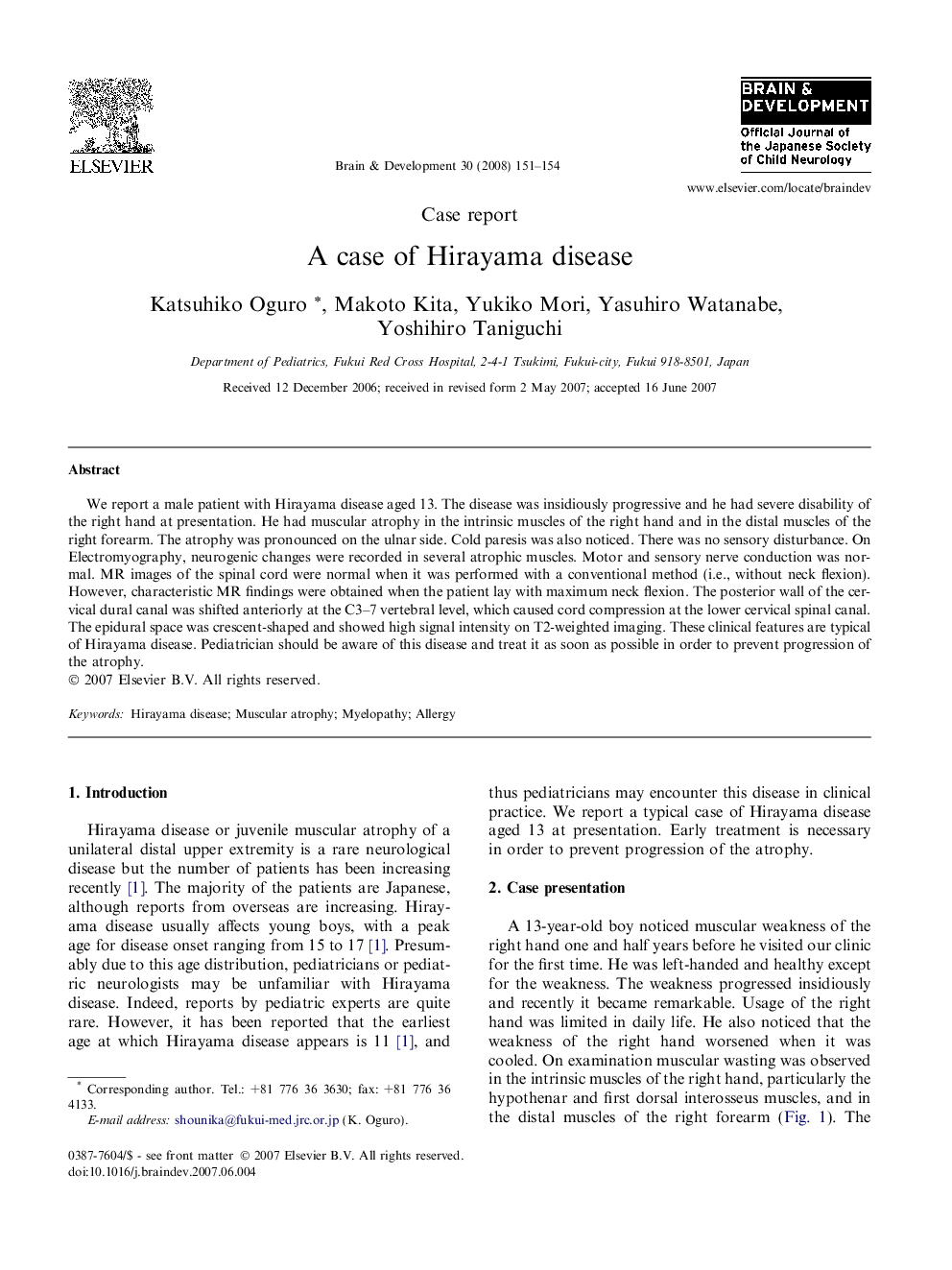| Article ID | Journal | Published Year | Pages | File Type |
|---|---|---|---|---|
| 3038201 | Brain and Development | 2008 | 4 Pages |
We report a male patient with Hirayama disease aged 13. The disease was insidiously progressive and he had severe disability of the right hand at presentation. He had muscular atrophy in the intrinsic muscles of the right hand and in the distal muscles of the right forearm. The atrophy was pronounced on the ulnar side. Cold paresis was also noticed. There was no sensory disturbance. On Electromyography, neurogenic changes were recorded in several atrophic muscles. Motor and sensory nerve conduction was normal. MR images of the spinal cord were normal when it was performed with a conventional method (i.e., without neck flexion). However, characteristic MR findings were obtained when the patient lay with maximum neck flexion. The posterior wall of the cervical dural canal was shifted anteriorly at the C3–7 vertebral level, which caused cord compression at the lower cervical spinal canal. The epidural space was crescent-shaped and showed high signal intensity on T2-weighted imaging. These clinical features are typical of Hirayama disease. Pediatrician should be aware of this disease and treat it as soon as possible in order to prevent progression of the atrophy.
